Plan your Nanchang tour? Nanchang is the capital of Jiangxi Province in southeastern China. It is located in the north-central portion of the province.
As it is bounded on the west by the Jiuling Mountains, and on the east by Poyang Lake, it is famous for its scenery, rich history and cultural sites. Owing to its central location relative to the Yangtze and Pearl River Delta regions, it is a major railroad hub in Southern China.
No. 01: Pavilion of Prince Teng (滕王阁)
Pavilion of Prince Teng is a building in the north west of the city of Nanchang, Jiangxi province, China, on the east bank of the Gan River and is one of the Four Great Towers of China.
The Pavilion of Prince Teng was first built in 653 AD, by Li Yuanying, the younger brother of Emperor Taizong of Tang and uncle of Emperor Gaozong of Tang. The building has a total floor area of 13000 square metres. It sits atop 12-metre tall concrete platform, which is intended to symbolise the now-destroyed ancient city wall. A stainless steel tablet at the entrance is engraved with a calligraphy work of Mao Zedong.
Entrance Fee: CNY 50
Opening Hours: 07:30-18:00 (May1 to Oct. 7); 08:00-17:30 (other time)
How to get there: take Buses No. 7, 8, 26, 302, Y1, Y2, 135 or 118 to Pavilion of Prince Teng

No. 02: August First Nanchang Uprising Museum (南昌八一起义纪念馆)
The Nanchang August First Uprising Museum was built on the site of the Nanchang Uprising Headquarters, a gray building blending both Western and Chinese architectural styles.
This building used to be a local hotel, but as they used it as the headquarters of the revolutionary army at the time of uprising in arms in 1927, it has been kept as a memorial hall to the revolution with a lot of objects of historical and cultural importance on display. A golden plaque with an inscription written by Chen Yi, former mayor of Shanghai and highest ranking military commander in China, hangs above the door to the museum.
Entrance Fee: free
Opening Hours: 08:00-17:30 (closed on Monday)
How to get there: take Buses No. 2, Tram 7, 18, Y1 or Y2 from the downtown area
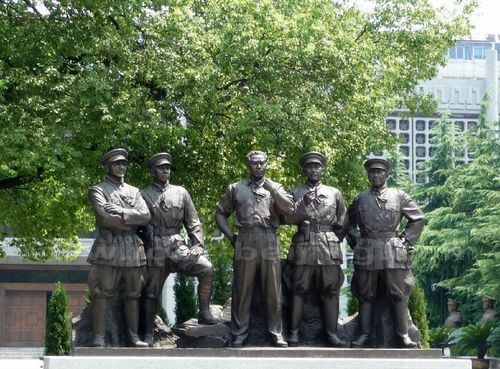
No. 03: Poyang Lake (鄱阳湖)
Poyang Lake is situated in the north part of Jiangxi province, not far from Nanchang, lying on the south bank of the middle and lower reaches of Changjiang River. Poyang Lake has a surface area of 3,585 kilometers, a volume of 25 kilometers and an average depth of 8 meters. It is divided into east part and west part by Songmen Mountain. East part is the main lake body which is broad and relatively shallow.
West part is an estuary watercourse. The lake provides a habitat for half a million migratory birds, and is a favorite destination for birding. It is fed by the Gan and Xiu rivers, which connect to the Yangtse through a channel.
Entrance Fee: free
Opening Hours: 08:00-18-19:00
How to get there: Buses No. 9, 18, 26, 27 or 307
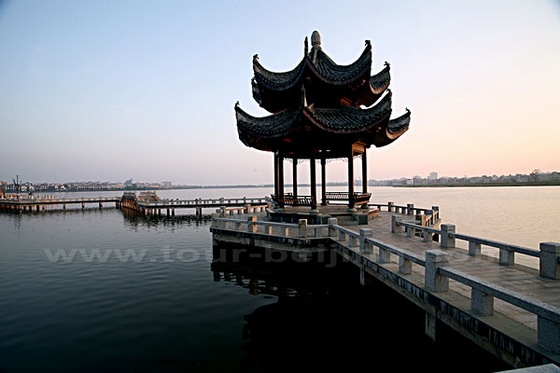
No. 04: Badashanren Memorial Hall (八大山人故居)
The Badashanren Memorial Hall is in Nanchang city. Badashanren, whose real name was Zhu Da, was a famous artist in the Qing Dynasty. He was a descendant of the first Ming Emperor Zhu Yuanzhang.
Badashanren Memorial Hall is a museum for commemoration, embodying the function of collection, displaying, research and publicity. It has abundant collections. The original palace hall has been changed to be exhibition hall to systematically display the works and historical data of Badashanren as well as the excellent works of masters nowadays.
Entrance Fee: CNY 40
Opening Hours: 08:00-18:00
How to get there: take Buses No. 20, 115, 203, 224 or Y2 to get there
No. 05: Jiangxi Provincial Museum (江西博物馆)
The Jiangxi Provincial Museum, located at Nanchang City, is a province-level historical museum of China. It was prepared in 1953 and officially opened to the public as a topological comprehensive museum on July 1, 1961.
This big comprehensive museum consists of three parts of historic museum, revolutionary museum and natural museum, what is first seen in the country. The Museum has collected 34,000 items of collection. The basic exhibitions are composed of the Exhibition of Jianxi Ancient Civilization History, the Exhibition of Jiangxi Revolutionary Relics and the Exhibition of Jiangxi Ancient Ceramics.
Entrance Fee: free (your ID card is needed)
Opening Hours: 09:00-16:30
How to get there: take Buses No. 29, 7, 18, 8, 20, 26 or 27 to Jiangxi Provincial Museum
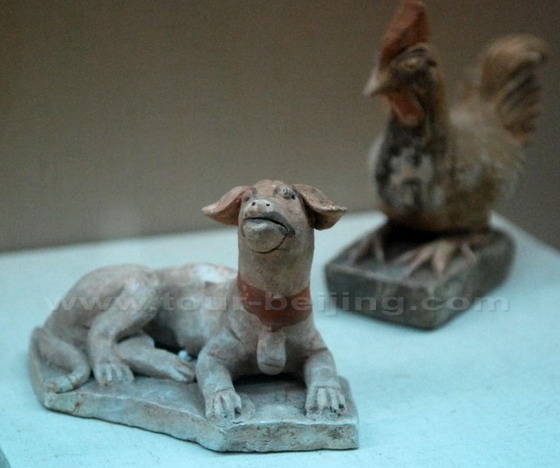
No. 06: Jinggang Mountain (井冈山)
Towering in the southwest of Jiangxi Province, Jinggang Mountain is in the middle stretch of Luoxiao Mountain in the border region between Jiangxi and Hunan provinces.
The area has complicated terrain, with main peaks over 1,000 meters above sea level. Nanfengping, or South Screen, the southernmost peak with an elevation of 2,120 meters, is the highest peak in Jinggang Mountain area. There are eight major scenic spots in the mountain. They are: Ciping, Huangyangjie Post, Dragon Pond, the highest peak, Tongmuling Post, Xiangzhou Area, Bijia Mountain and Xiankou Area.
Entrance Fee: CNY 156
Opening Hours: 06:00-20:00
How to get there: The are long-distance buses from Nanchang, and Ji’an to Ciping. In Ciping, there are public buses to every spot of Jinggang Mountain
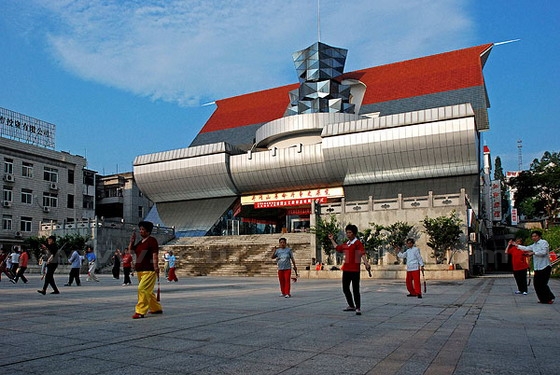
No. 07: Star of Nanchang (南昌之星)
The Star of Nanchang is a giant 160-metre (525 ft) tall Ferris wheel located in the eastern Chinese city of Nanchang, the capital of Jiangxi Province. The Star of Nanchang opened for business in May 2006, having cost 57 million Yuan to build.
There are 60 space capsules on the Ferris wheel, each equipped with LCD television, air conditioner and for 6-8 persons once. It can accommodate thousands of people watching the scenery of Nanchang in the air. At night the wheel lights up blue and red with giant neon characters that read, “Nanchang Welcomes You!”
Entrance Fee: CNY 60
Opening Hours: 08:30-22:30 (Monday to Friday); 08:00-22:30 (Saturday and Sunday)
How to get there: take Buses No. 17, 33, 230, 233 or Y2
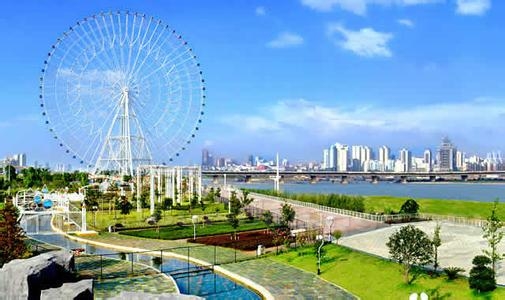
No. 08: Mingyue Mountain(明月山)
Mingyue Mountain is located 31 kilometers southwest of Yichun city, in Jiangxi Province, China, not far from Nanchang City. The Mingyue Mountain can be divided into five scenic areas and a resort. Tourists may view the waterfalls, sunrise, odd rocks, and precious plant and wild animals in these areas.
Tourists can’t miss enjoying the hot springs here. The temperature of the hot springs is about 68¡æ-72¡æ all year round. There are over 20 minerals which are beneficial to people’s health from the springs. After a hard trip, it will be a great relaxation to enjoy in the hot springs.
Entrance Fee: CNY 120
Opening Hours: 07:30-16:30 (peak seasons); 08:00-16:00 (low seasons)
How to get there: take Buses No. 2 and 5 from Train Station to West Bus Station, then transfer a minibus to Mingyue Mountain
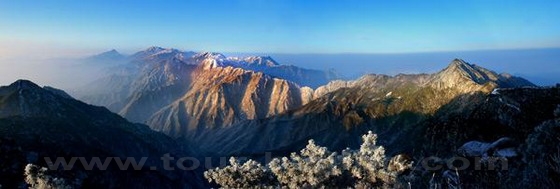
No. 09: Shengjin Tower (绳金塔)
The Shenjin tower is located on the east Lake District, west of Nanchang City. There are four golden rope, three ancient swords, and also 300 Buddhist relics. It acquires its fame because of the Chinta rope.
The rope Chinta for the Chiangnan models the post and panel structure of the pavilion tower, the tower height is 50.86 meters, the tower body is octagon with seven levels. On the exterior is the octagon shape, Zhu fence grey tile, the ink angle wall and the warning gold bottle gourd that has the strong religious color, the elegant upturned eave, and hanging copper bell is plain yet beautiful, with artistic style which Chiangnan was constructed.
Entrance Fee: CNY 20
Opening Hours: 08:00-17:30
How to get there: take Buses No. 5, 18, 21, 22, 30 or 219 to Shengjin Tower
No. 10: Tianxiang Park (天香园)
Tianxiang Park, with the former name “Xihu Gardening Park” located at South Road of Qingshan Lake, Nanchang, was founded in 1976. Tianxiang Park covers an area of 112 acres. Over the years, the park tree, cultivating flowers, and maintain a sound natural environment, attracted a large number of birds, the peak period of up to 32 varieties, more than 50,000 feathers, known as “birds of paradise” .
Park also has a tea house, the temple, cloud-chuen, calligraphy and painting rooms Archaize construction. Backdrop of trees, green grass and flower garden deserves to Nanchang, the “city” outside the Taoyuan.
Entrance Fee: CNY 30
Opening Hours: 08:00-17:30
How to get there: take Buses No. 15, 28, 201 or Y1
Any questions, just drop a line.





